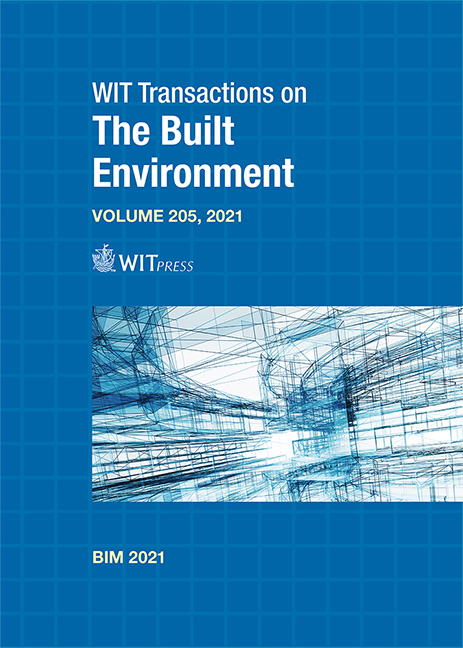HBIM WORK METHODOLOGY APPLIED TO PREVENTIVE MAINTENANCE: A STATE-OF-THE-ART REVIEW
Price
Free (open access)
Transaction
Volume
205
Pages
13
Page Range
157 - 169
Published
2022
Paper DOI
10.2495/BIM210131
Copyright
Author(s)
JORGE GARCÍA-VALLDECABRES, ANTONIO GALIANO-GARRIGÓS, LUIS CORTES MESEGUER, MARIA CONCEPCIÓN LÓPEZ GONZÁLEZ
Abstract
The consolidation of BIM work environments and the efficient management of construction information are reaching previously forgotten facets of the buildings’ life cycle. Preventive conservation and maintenance, which affect the building operation that accounts for 80% of CO2 emissions, are being subject to an improvement in their procedures based on the digitization of information. These actions are reaching historical buildings where procedures are not only being developed to improve their maintenance, but also in areas such as historical documentation and cultural management. The generation of repositories with documentation of the buildings is making it possible to establish new relationships with society, improving the conservation of buildings and designing actions that avoid future risks. There are different types of maintenance: corrective, preventive and predictive and despite its advantages, the agents in charge of these buildings do not always perform it properly. Furthermore, dysfunctions and lack of coordination are detected as many agents act without having adequate information. To solve these problems, BIM work environments are positioned as a valid alternative since they provide a centralized and updated repository where the information is arranged so that it is available to the different agents when they need it. This information can be historical or technical, including digital models and evaluation of deterioration and intervention processes. The objective of this research is the development of an analysis of the degree of implementation of BIM strategies applied to preventive maintenance in historic buildings and the analysis of the investigations carried out. This work is part of the first results of the research project entitled “Analysis and Development of the integration of BHIM in GIS for the creation of a tourist planning protocol of the cultural heritage of a destination (HBIMSIG-TOURISM)” granted by the Ministry of Research of Spain under the 2020 call for R&D&I Projects oriented to the Challenges of the Society with the reference PID2020-119088RB-I00.
Keywords
preventive conservation, management, BIM, HBIM, heritage





